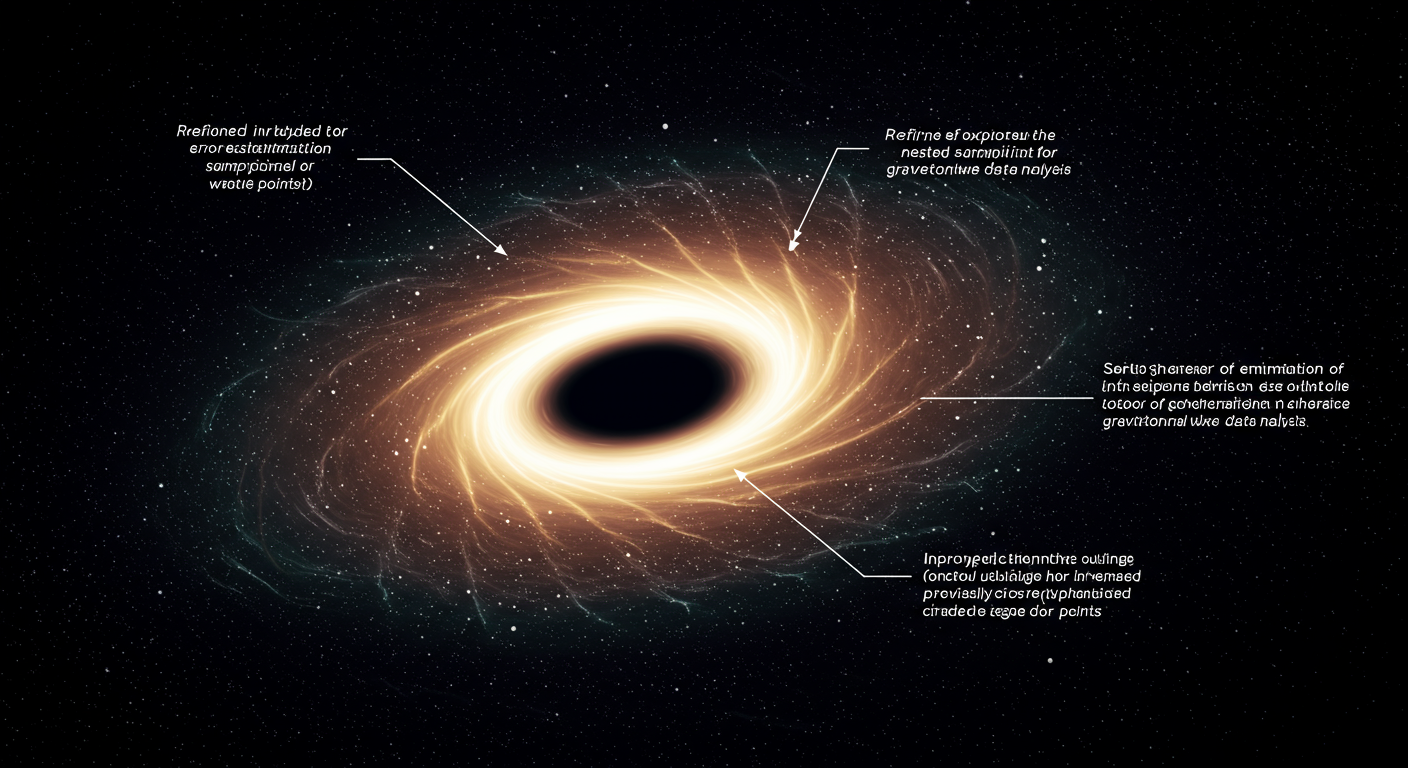Costless correction of chain based nested sampling parameter estimation in gravitational wave data and beyond

In their recent work, 2404.16428, Metha Prathaban and Will Handley address a critical, yet often overlooked, source of error in nested sampling parameter estimation. While nested sampling is a powerful tool for Bayesian inference in astrophysics and cosmology, particularly in gravitational wave analysis, its parameter estimation differs from evidence estimation, introducing unique challenges in error quantification. This paper presents two novel methods to refine the accuracy of error estimation in chain-based nested samplers, leveraging “phantom points”—discarded intra-chain points generated during the sampling process.
Nested sampling, commonly used for posterior and evidence estimation in gravitational wave events (2205.15570), calculates parameter means and credible intervals. Standard error estimation typically accounts for uncertainties related to prior volumes but often misses a crucial component: the variation of parameter values along iso-likelihood contours. This oversight can lead to underestimated error bars, impacting the reliability of parameter inferences, particularly in complex analyses like those involving black hole binary coalescences.
Prathaban and Handley introduce two innovative methods that utilize phantom points to enhance error estimation. These points, typically discarded in standard nested sampling, offer valuable insights into parameter variation along likelihood contours. The first method, “likelihood binning”, groups phantom points based on their likelihood values, associating them with the nearest dead point. By resampling parameter values from these bins, a more representative distribution is obtained, leading to more accurate error estimations. The second method, “reconstructed runs”, combines phantom points to create additional, statistically valid nested sampling runs. This offers a computationally efficient way to emulate multiple runs, further refining the error estimation without requiring additional computational resources.
The authors demonstrate the effectiveness of their methods using simulated black hole binary signals. By comparing their results with the standard simulated weights method and the bootstrapping approach proposed by Higson_2018, they showcase the significant improvement in error quantification achieved by incorporating phantom points. They also provide a convergence check, using phantom points to assess the adequacy of chain lengths for accurate error estimation. This work significantly advances our ability to accurately assess parameter estimation errors in nested sampling, strengthening the reliability of gravitational wave analyses and Bayesian inference in related fields (1704.03459, 1506.00171).


Content generated by gemini-1.5-pro using this prompt.
Image generated by imagen-3.0-generate-002 using this prompt.